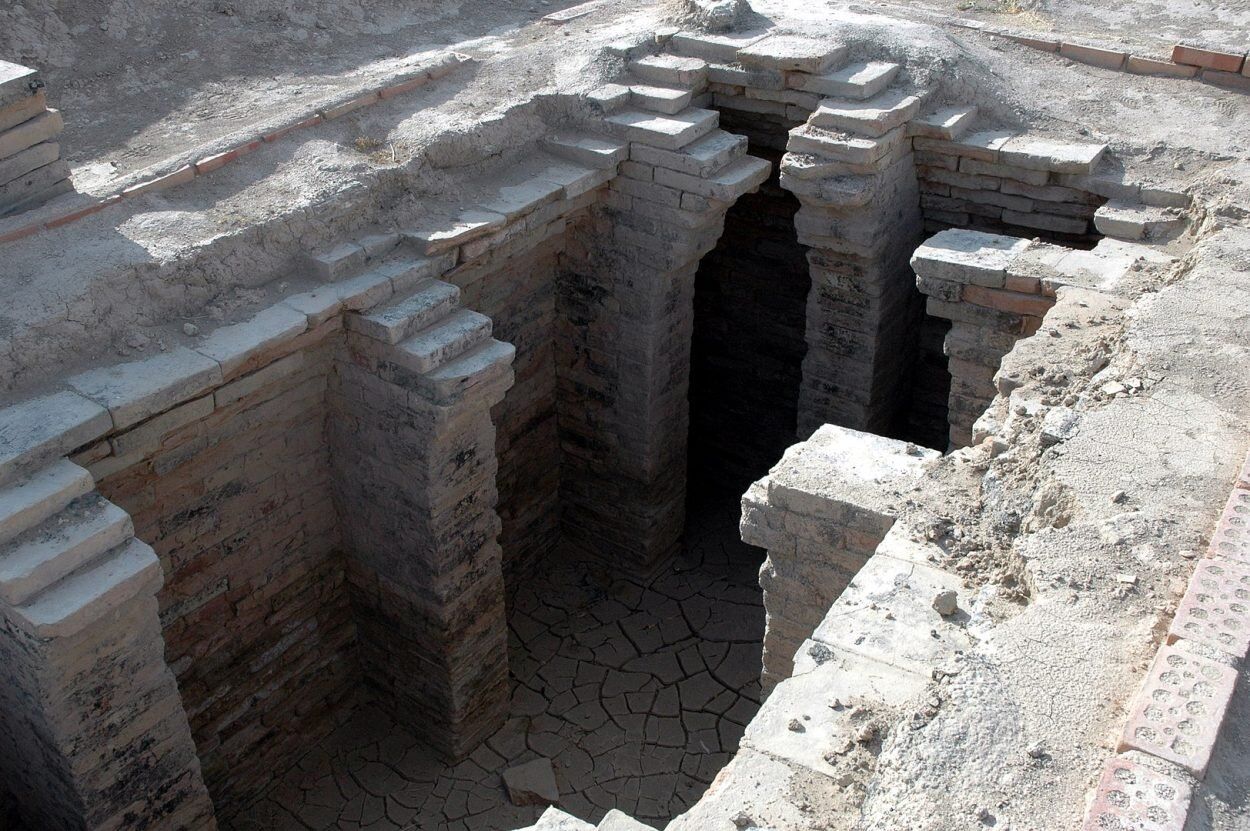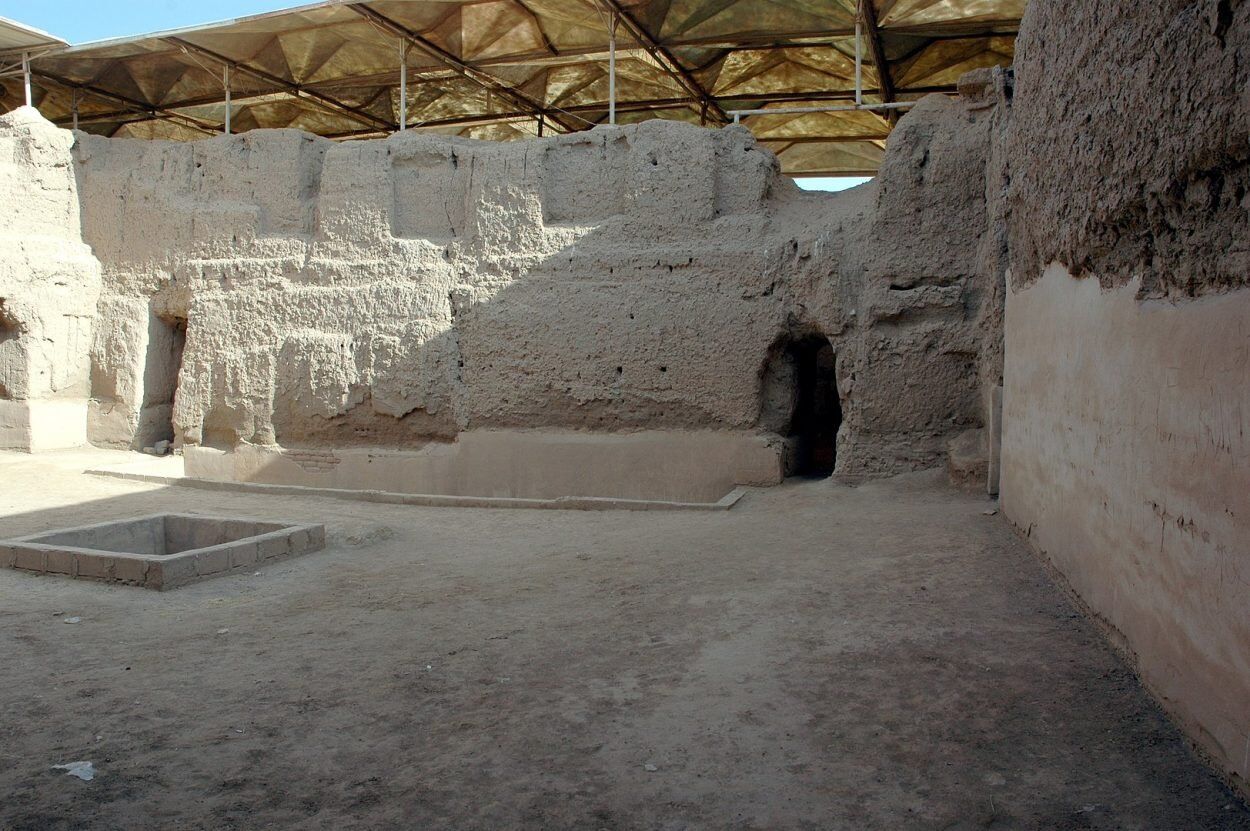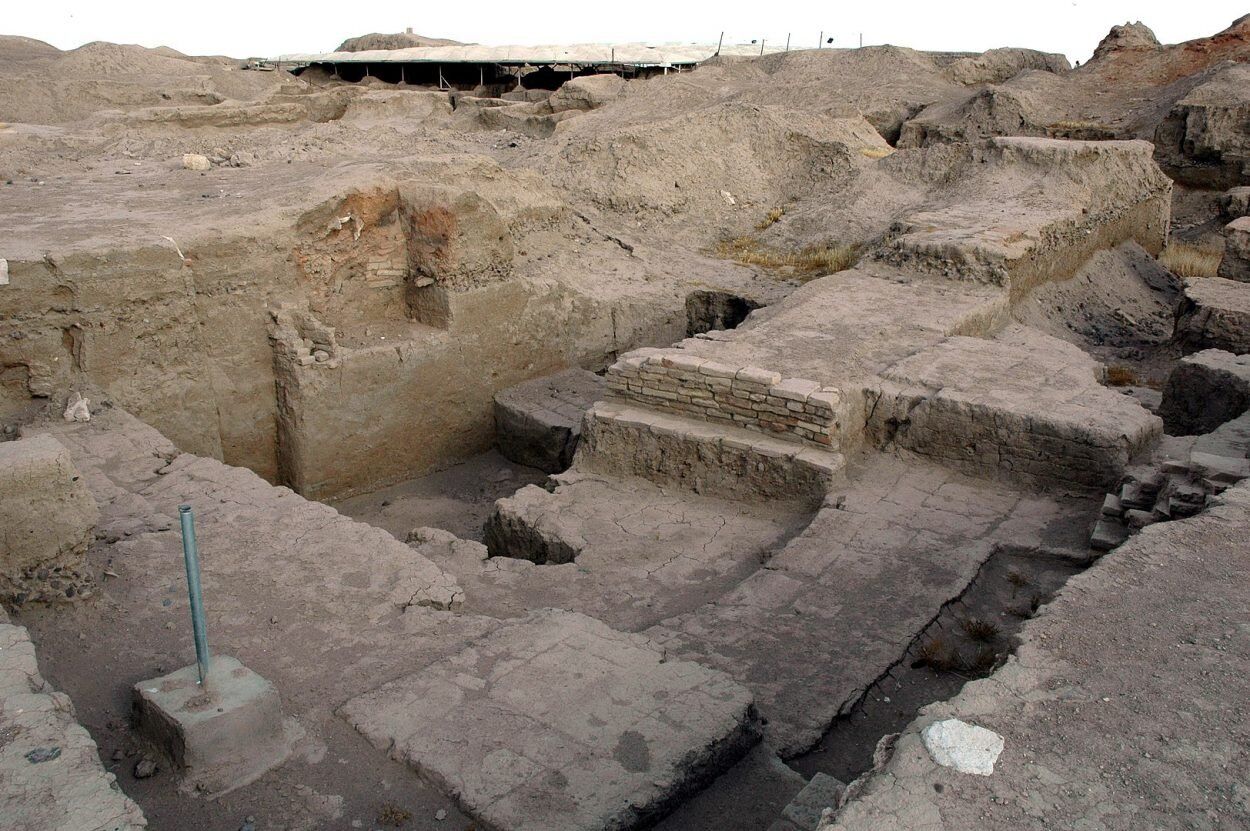Mari is an archaeological site, located near Abu Kamal on the western bank of the Euphrates in Syria.
Unlike many cities that grew from an earlier settlement or nucleus of settlements, Mari was purpose-built as a city during the Mesopotamian Early Dynastic period I around 2900 BC by either the Sumerians, the Kish civilisation or the East Semitic speaking people from Terqa in the north.
The city was founded to control the trade routes and waterways that connected the Levant with the Sumerian and Eblaite Kingdoms, reaching a population of 40,000 inhabitants at its peak.

The first phase of the city comprised of a circular embankment with an internal rampart that contained gardens and industrial works. At the centre of the city was a central mound with an administrative or civic building, encircled by a residential district but was abandoned during the Early Dynastic Period II around 2550 BC.
Mari was reoccupied during the Early Dynastic Period III and refortified with a two-metre wall around the outer circular embankment. At the centre, a royal ceremonial palace was constructed with several temples and a series of sophisticated urban planning with streets that descended from the centre to ensure proper drainage.

Around 2300 BC, Mari was destroyed by Sargon of Akkad, the ruler of the Akkadian Empire and was placed under the control of an Akkadian governor establishing the Shakkanakku dynasty. With the fall of Akkad, Mari gained its independence but was absorbed into the expanding Amorite territories becoming a seat of the Amorite Lim dynasty.
Mari was destroyed in a conflict with Babylon around 1759 BC, shrinking in size to a small village under Babylonian administration but would change hands in ongoing wars between Babylon and Assyria.

In the middle of the eleventh century BC, Mari became part of Hana whose king Tukulti-Mer took the title – King of Mari and rebelled against Assyria, causing the Assyrian King Ashur-bel-kala to attack the city. The city continued as a small settlement until the Hellenistic period before disappearing from historical records.
Mari was rediscovered in 1933 by Bedouin tribes who were digging at Tell Hariri when they discovered a headless statue. A research team from the French authorities controlling Syria at the time was despatched who started excavations later that year.
Since 1933, over 25,000 clay tablets in Akkadian, written in cuneiform have been discovered revealing a detailed account of the Mari city-state, the administration, economic and judicial activities and the names of various officials and the city’s historical chronology.
Header Image Credit : Gianfranco Gazzetti







